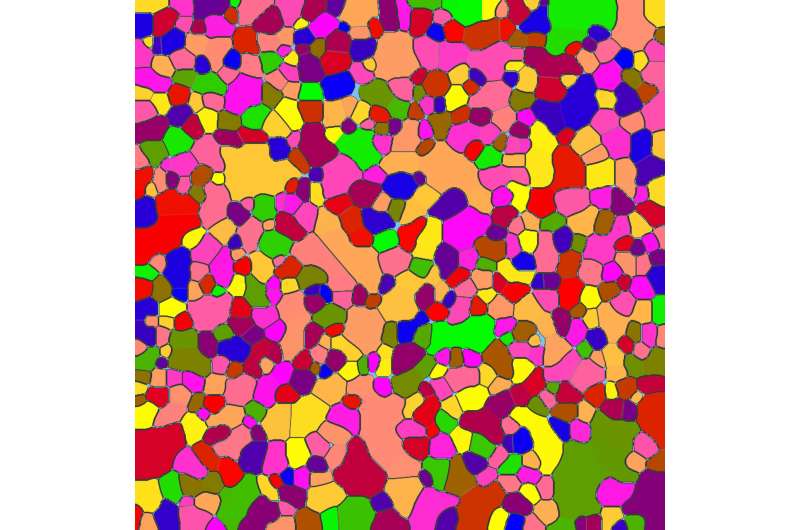New theory could lead to better batteries, fuel cells

A new theory could enable researchers and industry to tune and improve the performance of a material called ionic ceramics in rechargeable batteries, fuel cells and other energy applications.
Ionic ceramics are made up of many faceted "grains" that meet at boundaries in ways that affect, for example, how much power a fuel cell can deliver or how fast a battery can be recharged and how long it can hold a charge.
"My cell phone has a (fixed) amount of charge, and those grain boundaries are a limiting factor," to how much of that charge is indeed useful said Edwin García, a professor of materials engineering at Purdue University.
One challenge in perfecting technologies that use ionic ceramics is overcoming the insulating effects of the grain boundaries (interfaces between grains), which undergo "phase transitions" (structural and electrochemical changes), thus impacting material properties.
"It's a problem that has existed in the field of ceramics for the last 40 years," he said. However, it was not until these last 10 years when scientists realized that interfaces (2-D materials), just like bulk phases (3-D materials) can undergo phase transitions.
Working with García, doctoral student Suryanarayana Karra Vikrant led research to develop the new theory, which describes what happens at the interface between the tiny grains. The work extends the pioneering research of John Cahn for metal, who was awarded a 1998 National Medal of Science and was a researcher at the Massachusetts Institute of Technology and the National Institute of Standards and Technology.
"The theory shows these interfaces are undergoing phase transitions, which had not been [identified as such] before," García said.
The 2-D phase transitions may include changes in charge, voltage, and structural "disorder," which affects the material's properties across a 10nm scale, but impacting performance, properties, and degradation at the macro scale.
The theory was validated using yttria-stabilized zirconia, or YSZ, a material in solid oxide fuel cell applications. Findings are detailed in a research paper appearing Wednesday (Feb. 20) in the Nature journal Computational Materials.
Vikrant Karra, a Purdue student created a phase diagram showing how the grain boundaries undergo transitions.
"From a basic-science perspective, this work is very cool, but it's also relevant to energy applications," García said.
For example, he said, being able to better engineer interfacial ceramics could bring fuel cells and batteries that hold a charge longer and can be charged faster than now possible. This is because interfacial phase transitions can cause the grain boundaries to become insulators, interfering with a battery's performance.
"So, this theory is a first step in tuning these [2-D phases in bulk] ceramics," he said.
The theory applies not only to YSZ, but also to other ceramics that could bring solid-state batteries, or batteries that contain no liquid electrolyte, an advance that offers various potential advantages over conventional lithium-ion batteries. They would be lighter and safer for electric vehicles, eliminating the danger of leaking or flammable electrolyte during accidents.
The findings also have implications for the design of ceramics for ferroelectric and piezotronics applications, which are aimed at computer memories, energy technologies and sensors that measure stresses in materials. Advanced designs could reduce energy consumption in these applications.
Future research include work to demonstrate the theory with experimental results in batteries and to learn about the dynamic behavior of grain interfaces.
More information: K. S. N. Vikrant et al. Charged grain boundary transitions in ionic ceramics for energy applications, npj Computational Materials (2019). DOI: 10.1038/s41524-019-0159-2
Journal information: Nature
Provided by Purdue University





















